A country with stunning landscapes of mountains, waterfalls and lakes, Canada has a huge selection of natural landmarks. With a rich history and vibrant cities, Canadian landmarks such as CN Tower and Canadian Museum For Human Rights have become instantly recognisable too.
However, you’d be surprised that the second-largest country in the world has plenty of stunning landmarks in Canada that are often easily overlooked. From iconic buildings to natural landforms to quirky statues, here are some of the top Canadian landmarks to tick off your list.
Contents
26 Canadian Landmarks for Your Bucket List
Top Tour
- Canada and the Rockies – Starting and ending in Vancouver, the “Canada And The Rockies” tour is an 11-day guided natural landmarks sightseeing trip.
Natural Landmarks in Canada
1- Niagara Falls, Ontario
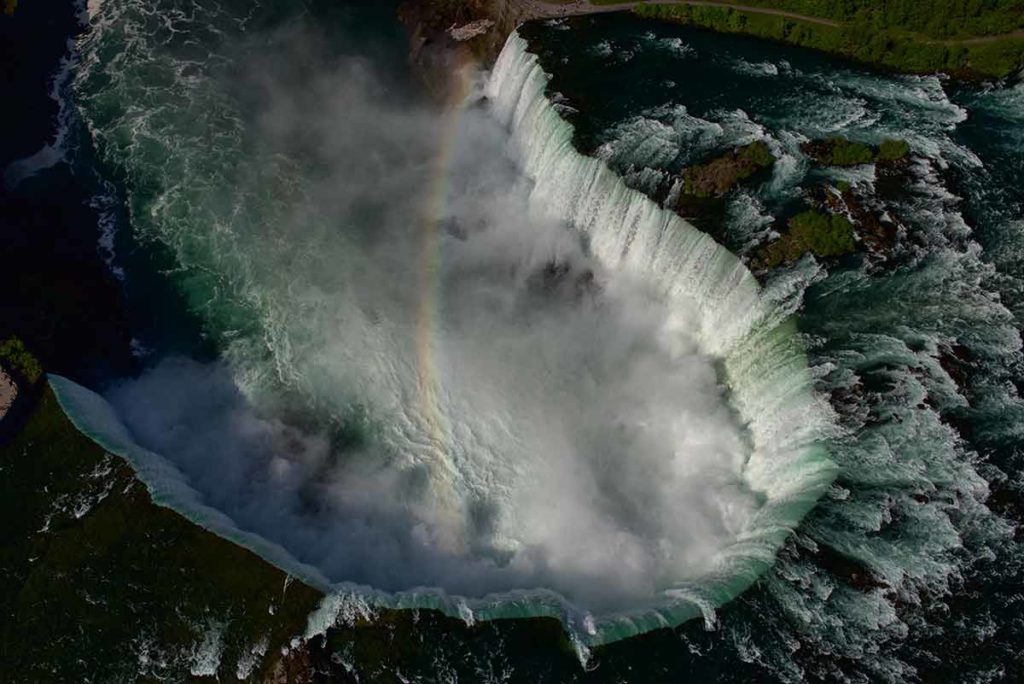
Straddling the border of Canada and the USA, Niagara Falls is a natural wonder that attracts tourists by the millions every year.
Three waterfalls are spread across the two countries, but besides being a tourist attraction, the volume of water produced by this Canadian landmark makes it a source of hydroelectric power.
The most impressive views of the falls are of Horseshoe Falls on the Canadian side, where you can view the falls both at night and during the day.
Other ways to experience Niagara Falls include flying above the falls in a helicopter, zipping across it on the zip line, cruising with Hornblower Niagara Cruises and exploring behind the falls with Journey Behind the Falls.
Niagara Falls is in the city of Niagara Falls, Ontario.
2- Lake Louise, Alberta
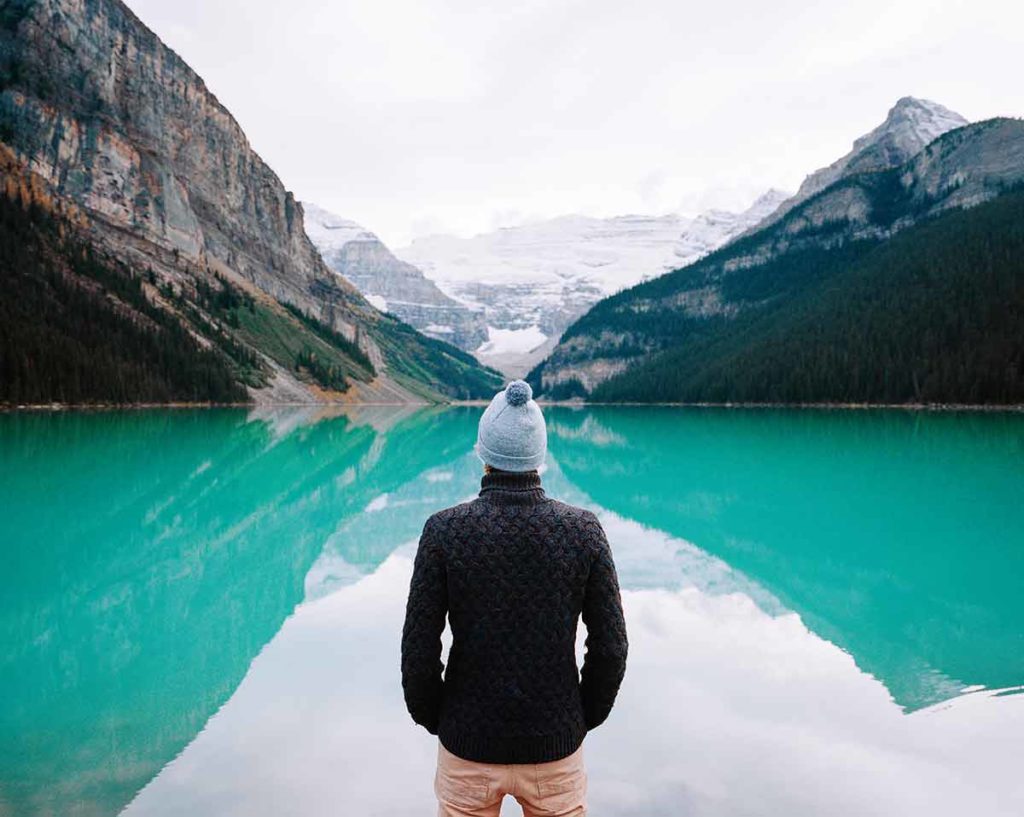
Banff National Park’s most famous lake, Lake Louise is a shimmering emerald pool in a picturesque landscape of snow-covered mountains.
The lake gets its colour from the rock flour that is swept down by meltwater from glaciers and is one of the most beautiful natural landmarks in Canada.
Named after a British princess, the daughter of Queen Victoria, Lake Louise is just as beautiful in winter as it is at other times of the year and is a fantastic place to go skiing in Alberta.
Lake Louise is on the Bow River in Alberta.
3- Mount Robson, Canadian Rockies
Although Mount Robson is not the tallest mountain in Canada or even British Columbia, it’s the highest peak in the Canadian Rockies.
With out-of-this-world scenery and home to wildlife, the Canadian Rockies is an inspiring place to soak up the power of nature.
You can explore the Rockies by visiting a number of national parks including Banff National Park, Jasper National Park, Kootenay or Yoho National Parks but if you want to see the highest mountain go to Mount Robson Provincial Park.
Part of the UNESCO World Heritage collection of Canadian Rockies parks, this one is not far from the town of Jasper (you can visit as a day trip).
Mount Robson is in Mount Robson Provincial Park, British Columbia.
4- Hopewell Rocks, New Brunswick
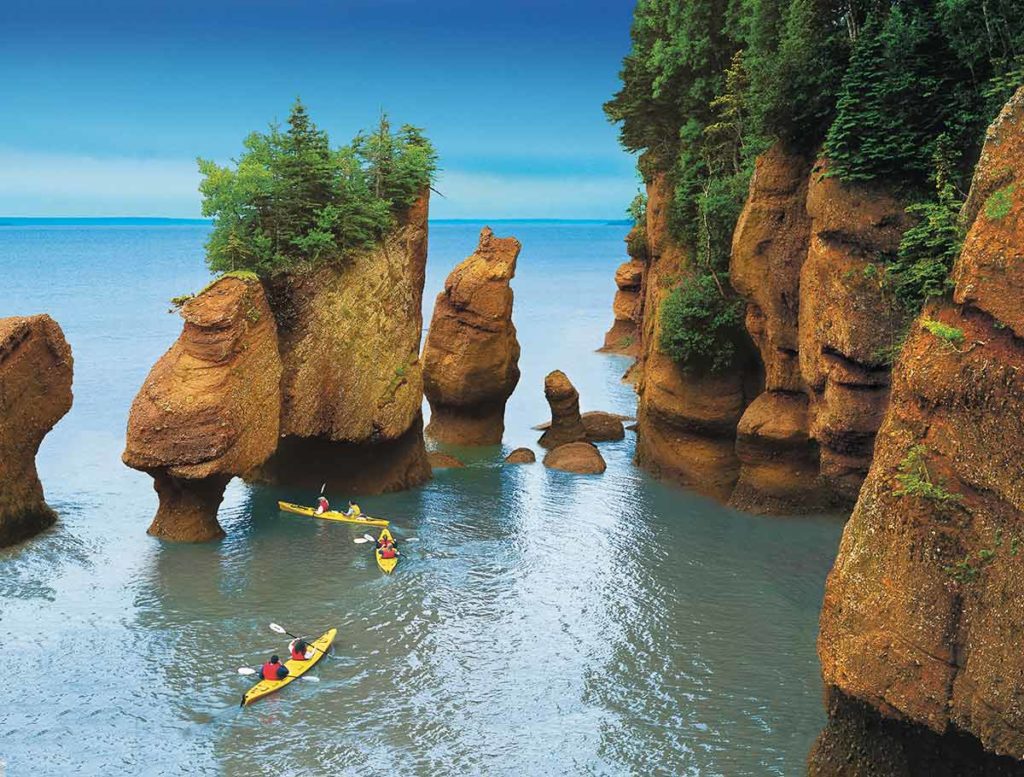
Shaped by centuries of tides pounding against the rocks, the unique Hopewell Rocks is in the Bay of Fundy.
One of the unique features of this Canadian landmark is the lower sections of the rocks are much thinner than the higher sections forming distinctive shapes.
During low tide, you can walk around Hopewell Rocks on the ocean floor while when the tide is high, the water level rises by 16 m from the ocean floor (picture a five-story building).
One of Canada’s natural wonders, the Bay of Fundy is a unique landscape of rocks, dinosaur fossils, minerals and the highest tides in the world.
Hopewell Rocks is in Hopewell Rocks Provincial Park, New Brunswick.
5- Carcross Desert, Yukon

One of the most unusual Canadian landmarks is the Carcross Desert in the Yukon, which is the world’s smallest desert.
Spread across 260 hectares, the series of dunes were formed by sand blown from Bennett Lake.
The Carcross Desert is in Carcross, Yukon.
Famous Landmarks in Canadian Cities
6- Canadian Museum for Human Rights
Opened on September 20, 2014, the Canadian Museum for Human Rights is a leading-edge Canadian landmark designed to honour the concept of human rights.
The entire project is visionary on many fronts, from its architecture to the thought-provoking galleries and displays inside it.
The building’s architecture designed by Antoine Predock is a futuristic landmark of Canada and the museum’s concept represents concepts of freedom, equality and.
Canadian Museum For Human Rights is at 85 Israel Asper Way, Winnipeg, Manitoba.
7- Chateau Frontenac
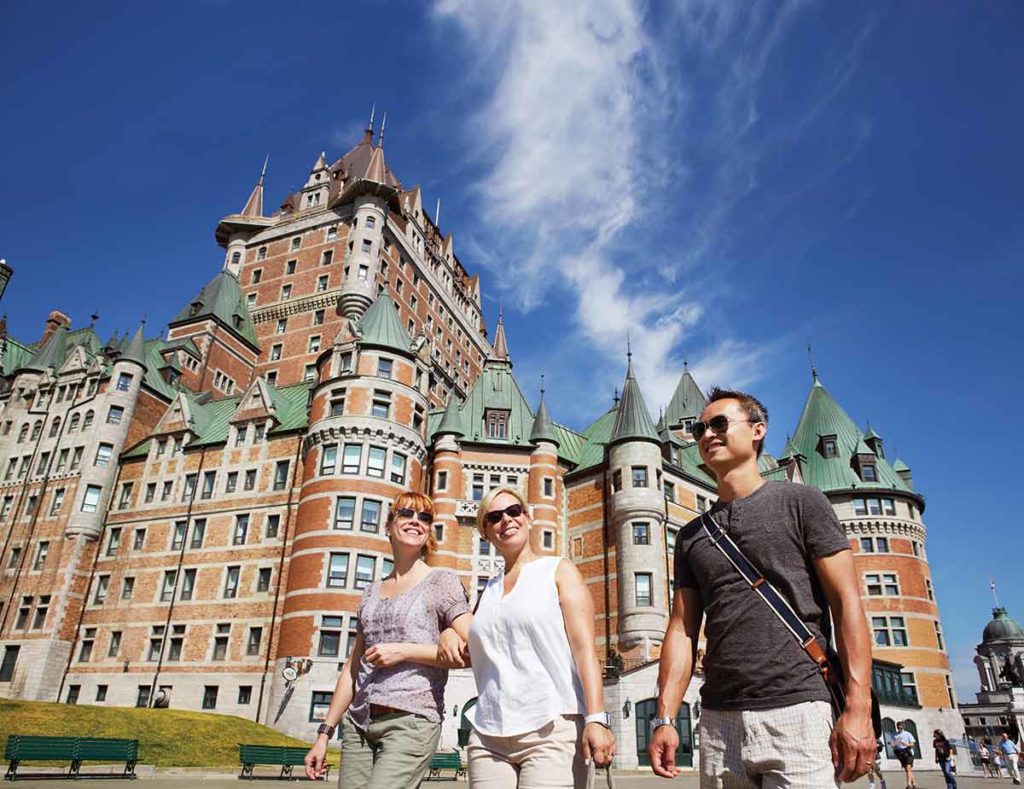
The elegant 19th Century Chateau Frontenac is an instantly recognisable as a landmark in Canada’s Quebec City.
Named after one of the governors of the New France colony, Comte de Frontenac, the Canadian Pacific Railway Company built it in 1892.
Chateau Frontenac is a National Historic Site and one of the most stunning of several château-style hotels built to service the growth of the railway system in Canada.
Chateau Frontenac is at 1 Rue des Carrières, Québec.
8- CN Tower
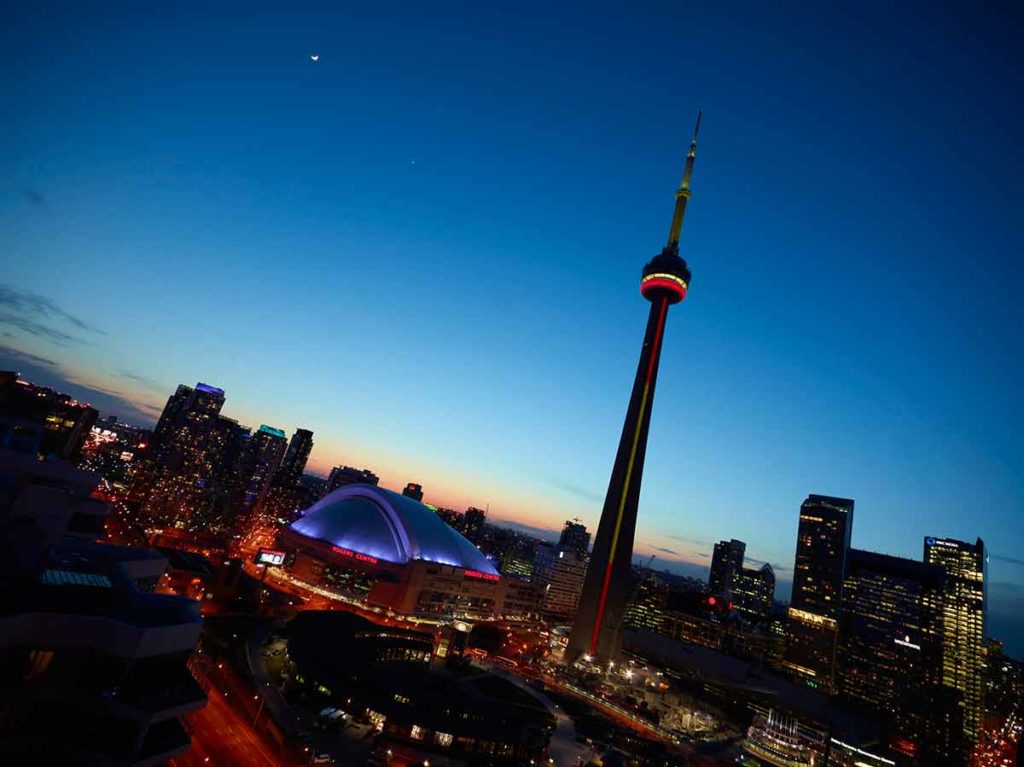
Toronto’s CN Tower may not be the world’s highest free-standing tower but it’s a Canadian landmark that can claim bragging rights for being one of the Seven Wonders of the Modern World in 1995 (according to the American Society of Civil Engineers).
Built in 1974, the communication tower is 1,800-feet high and is one of the tallest towers in the world.
CN Tower can be seen from just about anywhere in Toronto but do make it a point to experience some of the tower’s attractions, such as the thrilling hands-free EdgeWalk circumnavigating the tower on a 5 ft (1.5 m) ledge or riding the glass elevator to the SkyPod, a viewing platform 447 m (1,465ft) above the city.
CN Tower is at 290 Bremner Blvd, Toronto.
9- Parliament Hill
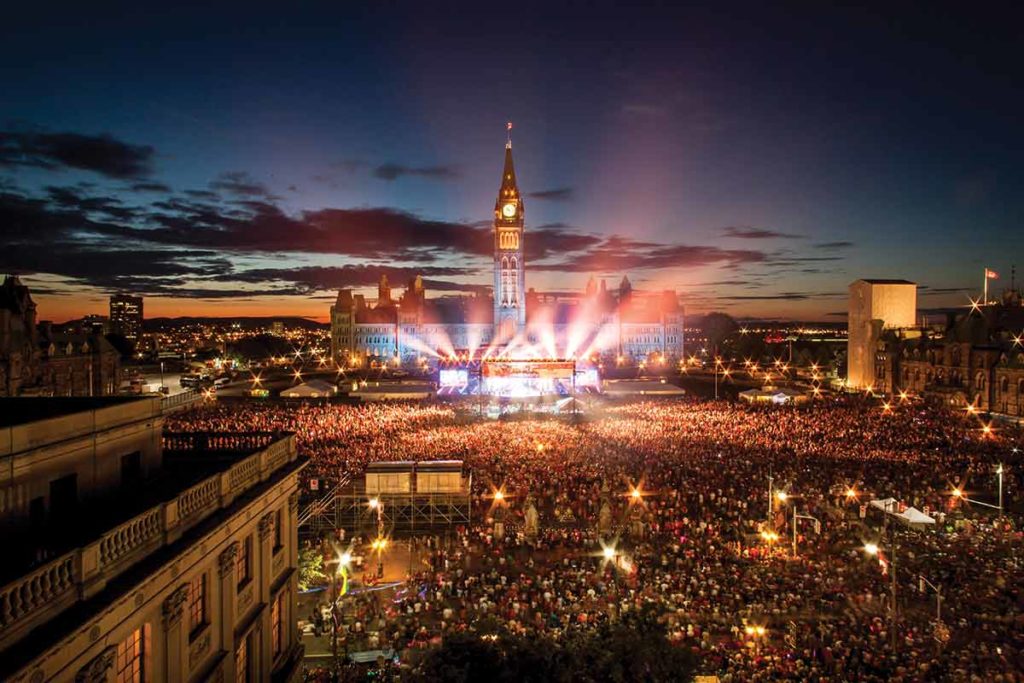
Ottawa became Canada’s capital in 1858 during the reign of Queen Victoria and Parliament was chosen as the site for the parliamentary buildings.
The Gothic Revival buildings have housed the Canadian Parliament since 1866, a year before Canada’s Confederation.
As part of a $3 billion restoration, the Centre Block of Parliament closed in 2018 for 10 years while the renovated West Block is home to the Canadian House of Commons.
Parliament Hill is at Wellington St, Ottawa.
10- Notre Dame Basilica
Montreal’s Notre Dame Basilica was the first Gothic Revival style church in Canada and became a basilica in 1982.
It’s worth paying the admission and taking a guided tour of the Notre Dame Basilica to learn about the Parish, the building’s architecture and artwork.
Notre Dame Basilica is at 110 Notre-Dame St W, Montreal.
11- Grouse Mountain
One of Canada’s most famous landmarks is Grouse Mountain, which is in North Vancouver and is an attraction all year round.
The mountain is popular with outdoors types who might relish the challenge of hiking to the top in but you don’t have to be fit to enjoy the mountain’s delights.
In winter, the ski resort’s 33 runs offer snowboarding and skiing; other winter activities include snowshoeing, sleigh rides and the enchanting Light Walk.
The Grouse Mountain Skyride, which has been operating since 1966, is the largest aerial tram in North America and a scenic way to explore.
Grouse Mountain is at 6400 Nancy Greene Way, North Vancouver.
- 25 Things To Do In Banff
- 25 Things To Do In Toronto
- 50 Things To Do In Vancouver
- 20 Things To Do In Whistler in Winter
- 7 Things To Do In Gananoque
- 30 Things To Do In Niagara Falls
- 20 Things To Do In Niagara On The Lake
- 30 Things To Do In Ottawa
- 25 Things To Do In Calgary
- 25 Things To Do In Winnipeg
- 20 Things To Do In Montreal
- Canada in Winter
- Canada in Summer
- Canada in Spring
- Canada in Fall
- 35 Things To Do In British Columbia
- 8 Things To Do In Penticton
- 10 Things To Do In Kelowna
- 11 Things To Do On Vancouver Island
- 22 Things To Do In Quebec In Winter
- 25 Things To Do In Yukon
- 20 Things To Do In Whitehorse
- 17 Things To Do In Yellowknife
- 20 Things To Do In Nova Scotia
- 5 Things To Do In Peggy’s Cove
- 11 Things To Do In Fredericton
- 20 Things To Do In Ottawa At Night
- Banff in Winter
Historic Landmarks in Canada
12- Head Smashed In Buffalo Jump
Head Smashed in Buffalo Jump may not be as well-known as Stonehenge or the Great Pyramid of Giza but it has the distinction of being much older.
6,000 years ago, Canada’s First Nations buffalo runners hunted bison by chasing them to the precipice where the bison leapt to their deaths at Head-Smashed-In Buffalo Jump.
This Canadian landmark site in Alberta has immense archaeological, historical significance and is one of the things to do near Calgary.
It’s a place that marks the traditional way of life and communal hunting techniques used for centuries.
Head Smashed In Buffalo Jump is at secondary Highway #785, Fort MacLeod, Alberta.
Quirky Landmarks in Canada
By Ilona Kauremszky
Going on a road trip around Canada to ogle at giant beavers and UFO landing pads might sound like a crazy way to spend your vacation.
But ticking these landmarks in Canada off your list is a fun way to remember your drive across Canada.
These giant monuments represent the regions they stand in and they show off the things that these places are famous for.
From naturally occurring formations to manmade objects of whimsy, here are 12 landmarks in Canada that will tickle your funny bone.
13- The Big Fiddle

Sydney’s world’s largest violin overlooks the Port of Sydney in Nova Scotia.
This beacon has become a symbol for the many cruise liners that dock at the new pier and serves as a warm welcome mat to the cruise-goers who disembark for their day excursions.
The Big Fiddle also serves as a fabulous example of Nova Scotia’s strong musical roots, which of course stems from the thousands of fiddlers who have called this province home.
The Big Fiddle is at 74 Esplanade, Sydney, Nova Scotia.
14- Ogopogo
Canada’s version of the Lochness monster harbours in the deep Okanagan Lake in British Columbia.
Known as Ogopogo, you will be hard-pressed to ever see this magical, mysterious lake monster.
But you can be guaranteed a fun photo-op with the green sea dragon statue in Kelowna’s City Park.
Ogopogo is at Okanagan Lake, Kelowna, British Columbia.
15- The Big Apple
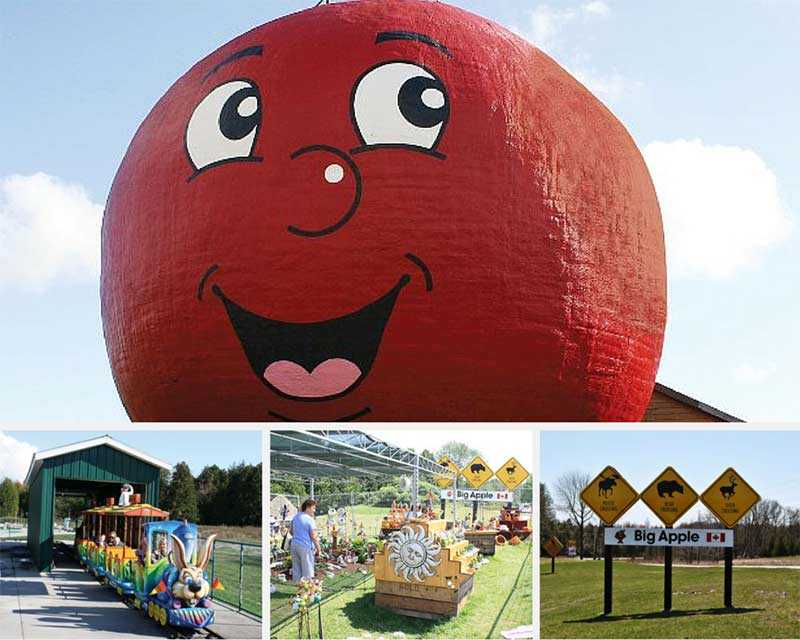
Canada’s Big Apple reigns proud outside the small, sleepy hamlet of Colborne, Ontario.
As far as big things go, this one well and truly qualifies.
Snap a photo of the big red apple, which is purportedly the world’s biggest, while others come to purchase the legendary homemade apple pies.
The Big Apple is at 262 Orchard Rd, Colborne, Ontario.
16- Jumbo The Elephant
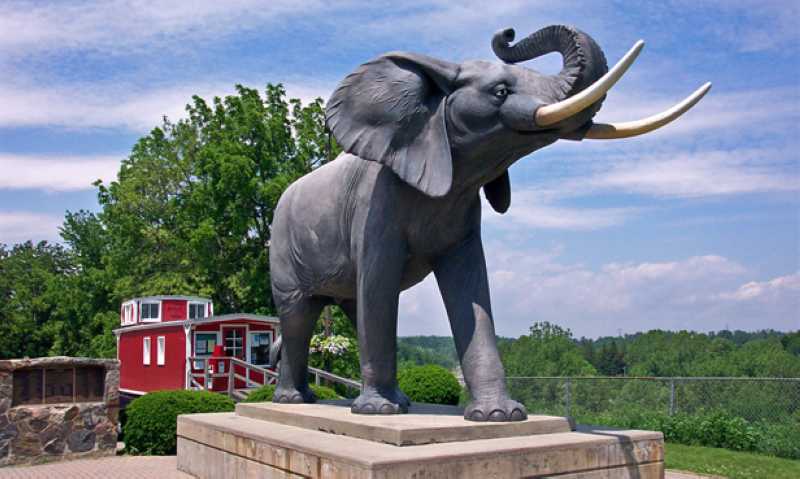
Another landmark in Canada is the life-size statue of Jumbo the Elephant in St Thomas, Ontario.
Jumbo may not be Ontario’s most famous landmark, which is Niagara Falls (check out these Niagara Falls attractions).
However, it stands as a tribute to Jumbo the elephant, the most famous elephant in the world.
In the circus world, Jumbo was one of the big things in more ways than one.
Jumbo was the main attraction of P.T. Barnum’s Circus.
Jumbo died tragically after being hit by a train in the small town of St. Thomas in 1995.
So it should be no surprise the name Jumbo has come to mean anything that is extra-large.
Jumbo the Elephant is at 65 Talbot, St Thomas, Ontario.
17- UFO Landing Pad
Who needs to fly to Mars to see if there’s life when there’s a UFO Landing Pad … in Canada.
It’s a landmark in Canada? No kidding!!
This structure located in the small town of St. Paul Alberta was built as a Centennial project in 1967 to commemorate Canada’s 100th birthday.
Incidentally that year St. Paul, Alberta was also declared the Centennial Capital of Canada.
The pad – billed as the world’s first UFO Landing Pad – was erected to attract local and extraterrestrial tourists.
None have ever showed up.
The town further expanded the attraction in the 1990s by adding a UFO tourist info centre, where visitors can see photos and documents of UFO sightings.
The UFO Landing Pad is at 4844-5012 53 St, St. Paul, Alberta.
18- World’s Largest Perogy
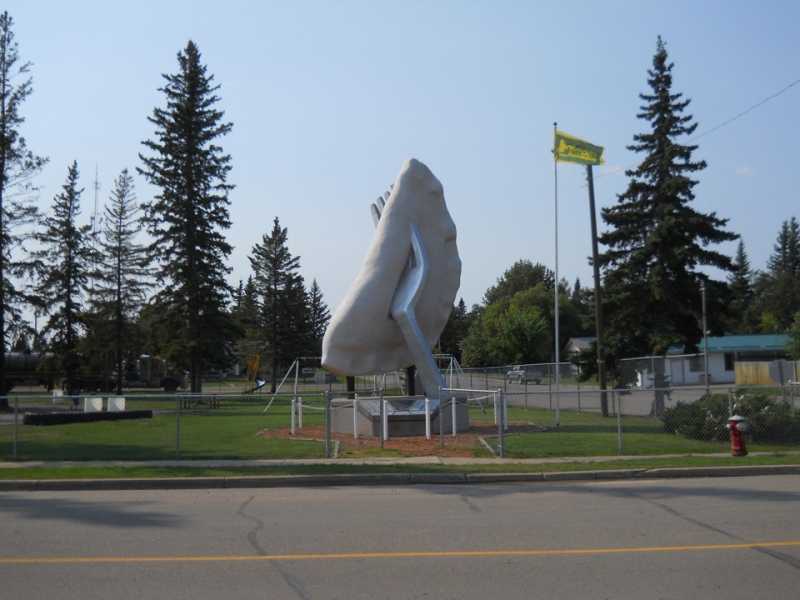
The World’s Largest Perogy can’t be eaten but is greatly admired.
In your wildest dreams, you probably wouldn’t imagine this would be the subject of a famous landmark in Canada.
The foodie symbol represents the thousands of Ukrainian settlers who arrived to plant roots in this largely rural farming area.
Head to Glendon, Alberta, the province’s Perogy Capital, to view the massive boiled dumpling objet d’art. You can’t miss it.
The perogy sculpture stands eight meters tall and weighs 2700kg.
Head to the gift shop and Pyrogy Park Cafe right next door to purchase some real perogies to take home.
The large dumpling-like structure is located in Pyrogy Park on Pyrogy Drive.
19- The Big Nickel
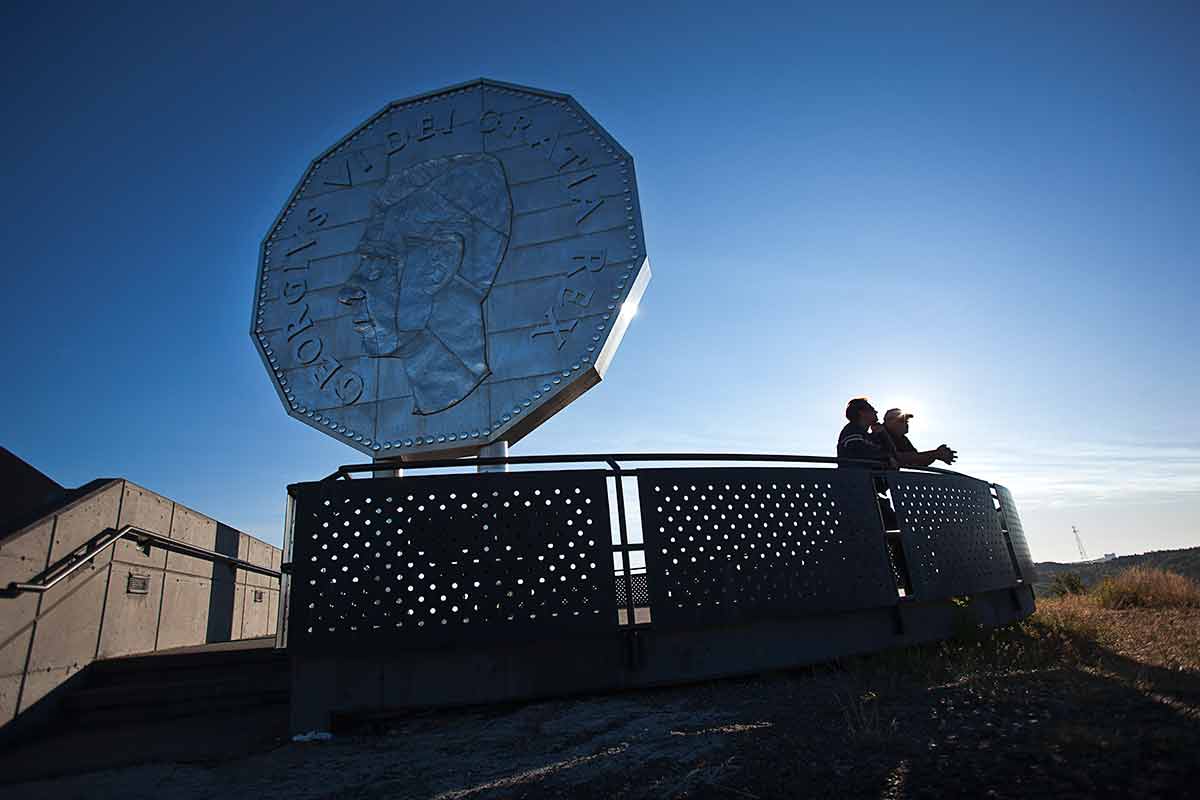
Coin collectors will want to spend some coin to venture to see the world’s largest coin … which looms high in Canada.
It’s called the Big Nickel.
This replica of the 1951 Canadian nickel coin is listed in the Guinness Book of World Records as the world’s largest coin.
The Big Nickel is a landmark in the mining city of Sudbury in northern Ontario which was once home to the largest nickel mine in the world.
20- The Wawa Goose Monument
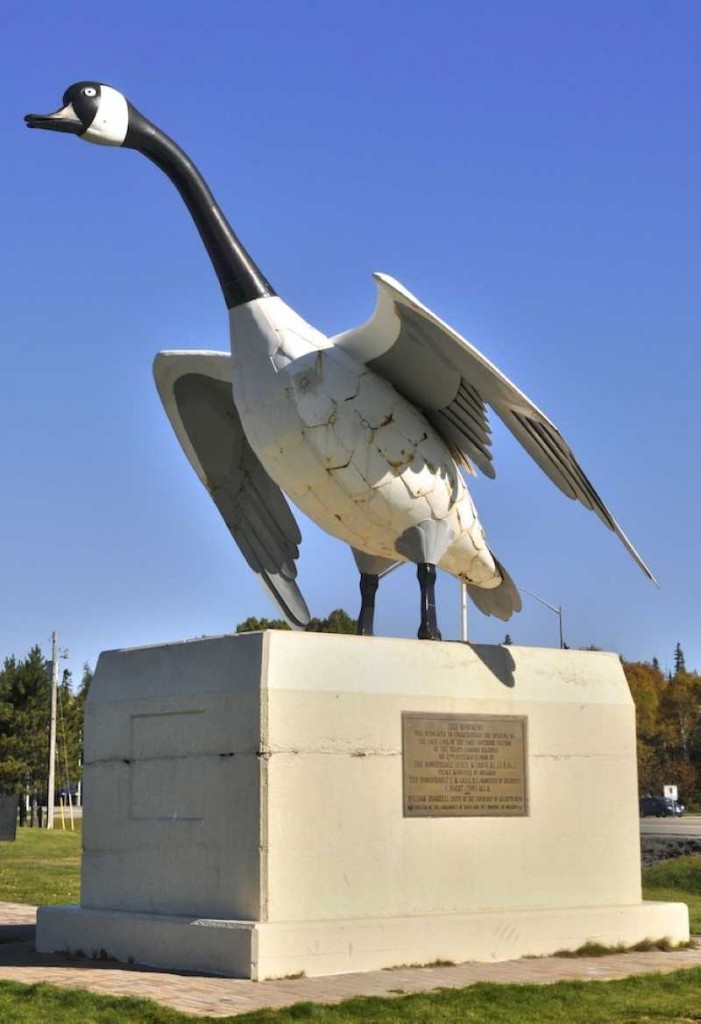
Canada’s goose gets top billing as one of Canada’s big things. Canada Goose parka apparel is known for its thick, warm down insulation.
Cinephiles love to watch the sweet documentary starring Canadian inventor Bill Lishman whose life project of the Canadian Geese was depicted in the movie classic, Fly Away Home.
So it’s no wonder there’s a roadside attraction dedicated to this bird. Head to Wawa, Ontario to see the Wawa Goose Statue.
“Wawa” is a native Ojibwe word for wild goose.
The statue is 8.5m tall, erected in 1960 and the Wawa Goose has also been immortalized in a Stompin’ Tom Connors folk song.
The Wawa Goose is at 93 Mission Rd, Wawa, Ontario.
21- The Giant Beaver
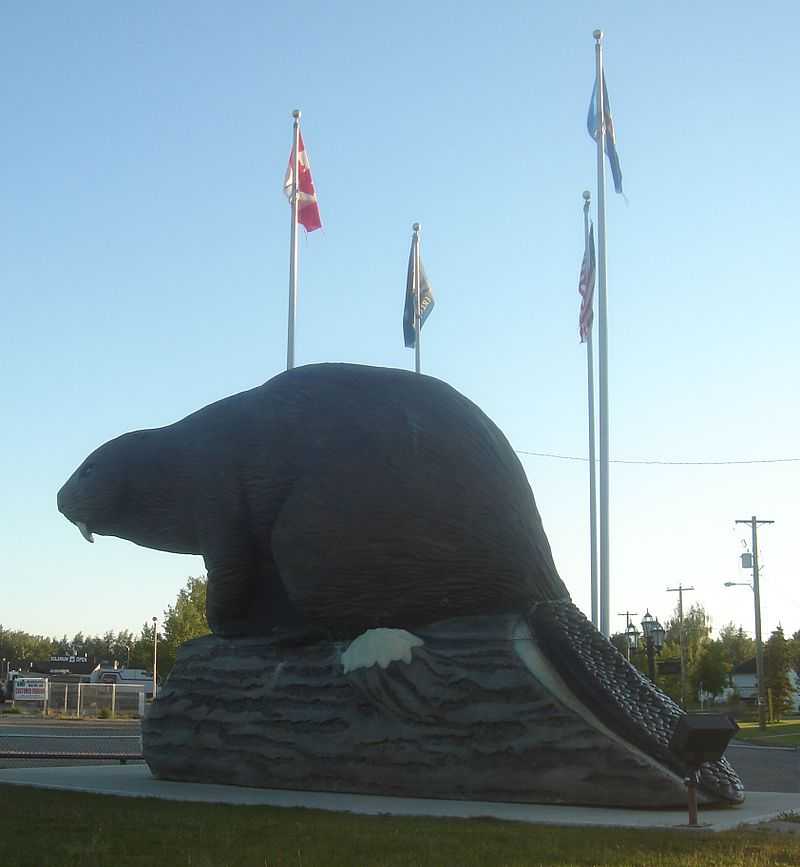
It gets pretty fascinating watching busy beavers but it also gets pretty surreal spotting the world’s largest beaver, and no, it’s not a monster in a horror flick either.
The Giant Beaver located in Beaverlodge Alberta is one of the landmarks in Canada that was carved to celebrate the town’s 75th anniversary.
The beloved sculpture of Canada’s national animal is 4.5m high and 8.5m long.
Now that’s one big beaver!
The Giant Beaver is at 5 Avenue, Beaverlodge, Alberta.
22- The World’s Largest Bee
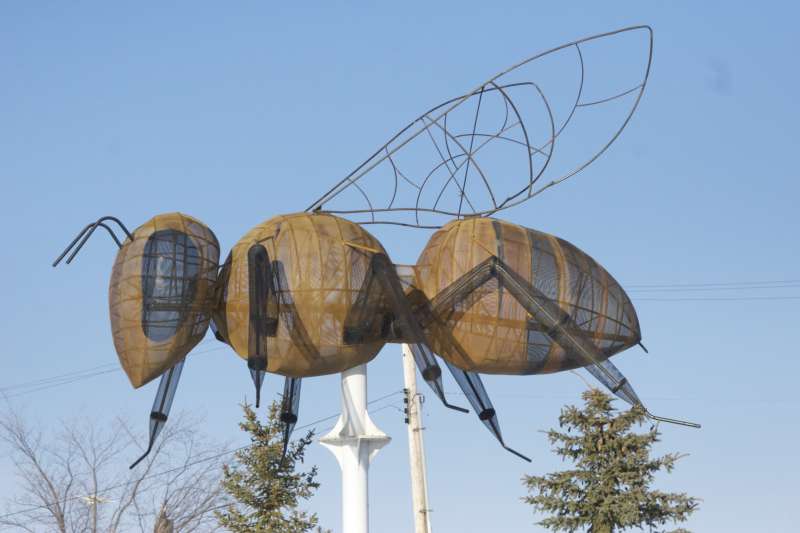
It doesn’t sting but it sure is sweet.
Of course, the huge roadside landmark in Canada, about the size of a compact car, represents the town which is known as the “Honey Capital of Canada.”
Its creator, a local Richard Ethier built it entirely from steel in 1990 to commemorate the town’s first honey festival.
In Falher, more than 48,000 bee colonies are busy producing over 4.5 million kilograms of clover honey every year.
The big bee is located downtown on Main Street in Bee Park, 1 3 Ave SE, Falher, Alberta.
23- World’s Largest Axe
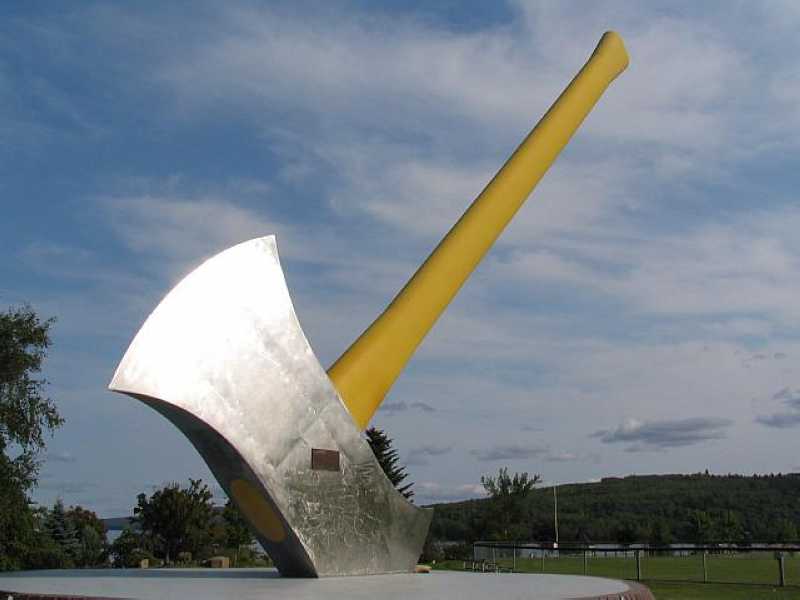
You might think this monumentally huge tool was a weird prop from a B-grade horror movie, not a tourist landmark in Canada.
This solid piece of shiny steel is actually a monument to the lumber and forestry industry.
Located in Nackawic, New Brunswick and built in 1991, the huge woodsman’s axe is a symbol to hardworking Canadian lumberjacks.
In the year the axe was installed, Nackawic was named the “Forestry Capital of Canada.”
The shining, chromed-axe head is seven metres long and made of a solid piece of steel that was planted into a concrete stump 10m in diameter.
The axe handle extends 15m into the air and there’s a time capsule embedded in the axe head for future generations.
The World’s Largest Axe is at Landegger Dr, Nackawic, New Brunswick.
24 – Centre of Canada Sign
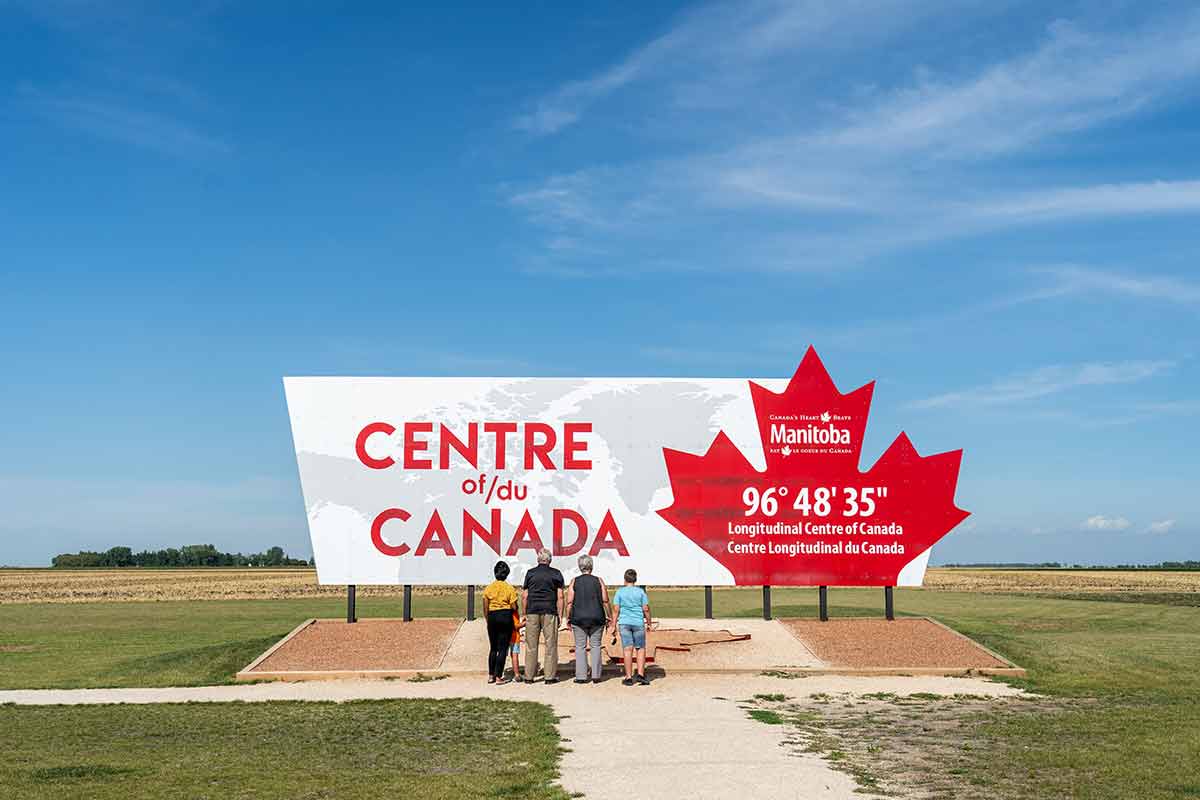
Although the exact spot that marks the centre of Canada is up for debate, the longitudinal centre when measured including Canada’s coastal islands has been claimed in the province of Manitoba.
The Centre of Canada signs are on both sides of the Trans-Canadian Highway so you can’t miss it, no matter which direction you’re coming from.
The bilingual sign gives the exact coordinates as 96° 48’ 35”.
The Centre of Canada sign is about 13.2km (8.2 miles) to the west of CA100 at 99 Trans-Canada Hwy, Lorette, Manitoba.
25 – Arborg Curling Rock
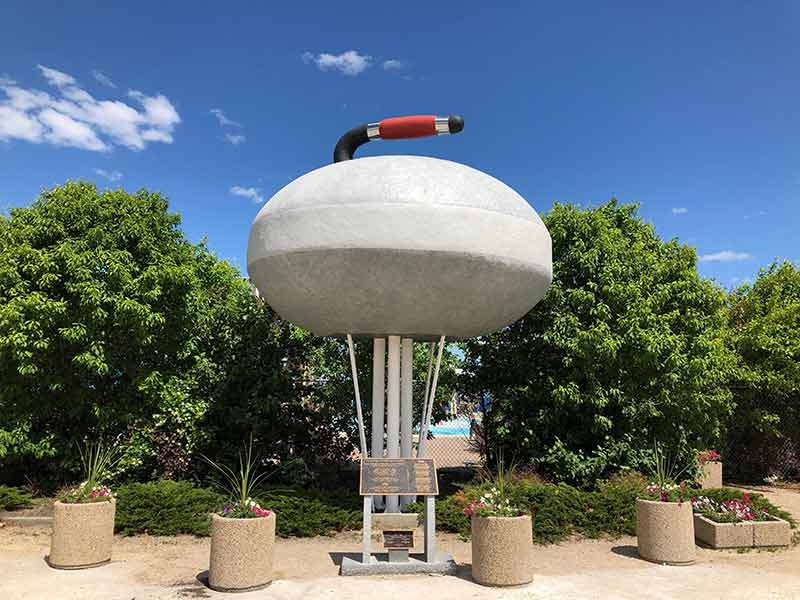
The world’s largest curling rock is an inconspicuous landmark in the small town of Arborg.
The rock was erected to recognise high school curling teams that won championships and is 3000 pounds of rock sitting on top of a steel pole.
Curling is a popular Canadian sport where players slide stones on a sheet of ice toward four concentric circles.
It’s similar to shuffleboard, boules or bowls and Canadian’s have been playing the sport since the first Europeans migrated to the country.
Canada has a global reputation as a top competitor in the sport, which is taken seriously.
The World’s Largest Curling Rock is at 417 Recreation Centre, Arborg, Manitoba.
26- Tommy The Turtle
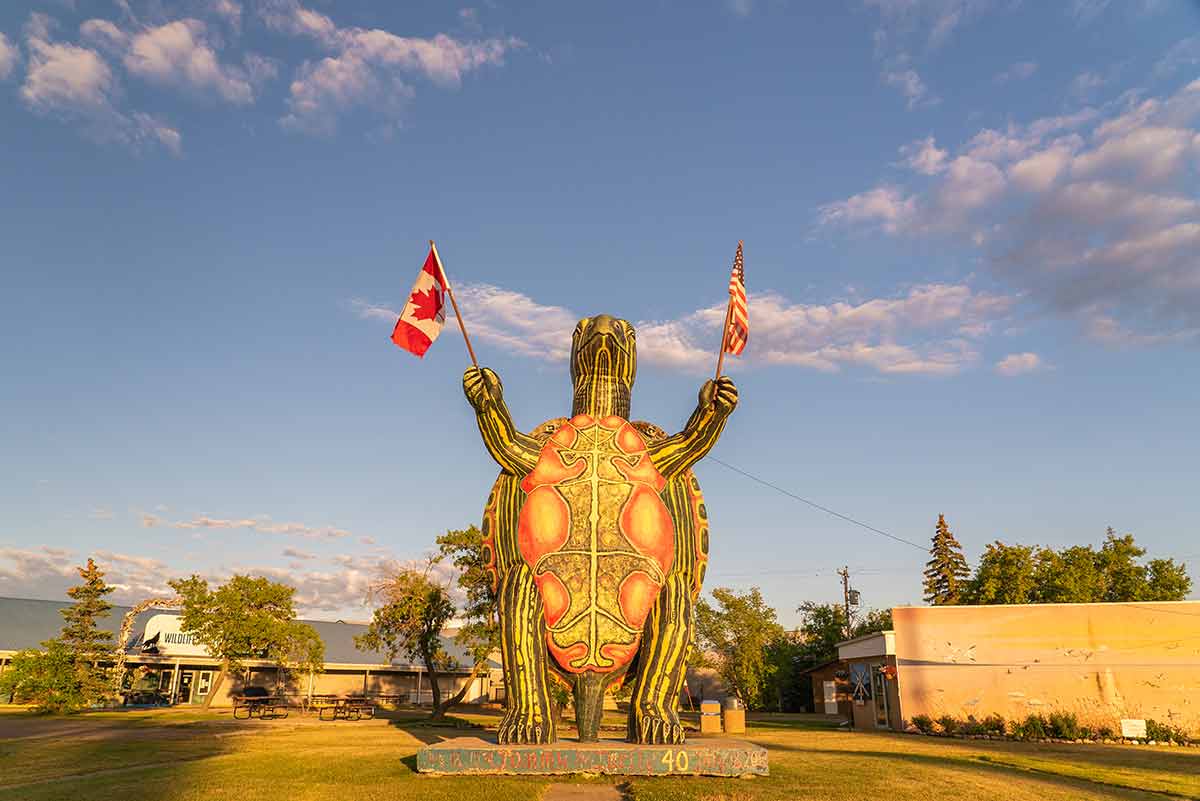
Tommy the Turtle is a quirky landmark in Boissevain, a small town in Manitoba.
This painted turtle monument is 28 ft and the work of sculptor George Barone.
The turtle was erected in 1974 during the third Canadian Turtle Derby, an event that began in Boissevain as a private race among locals.
It grew to around 450 turtles in 1983 and the derby was held in Boissevain for 30 years until 2001.
Tommy the Turtle is on Mountain St, Boissevain, Manitoba.
Also read:
- 20 USA Landmarks
- 23 Canada Landmarks
- 22 Ohio Landmarks
- 21 Arizona Landmarks
- 21 Minnesota Landmarks
- 21 Oregon Landmarks
- 21 Illinois Landmarks
- 21 Colorado Landmarks
- 21 Georgia Landmarks
- 21 Michigan Landmarks
- 23 Los Angeles Landmarks
- 21 Washington Landmarks
- 21 Maryland Landmarks
- 20 Manitoba Landmarks
- 20 Kansas Landmarks
- 21 New Mexico Landmarks
- 20 Idaho Landmarks
- 20 Montana Landmarks
- 20 Oklahoma Landmarks
- 21 Wisconsin Landmarks
- 20 Tennessee Landmarks
- 21 Iowa Landmarks
- 20 Alaska Landmarks
- 20 Miami Landmarks
- 21 West Virginia Landmarks
- 21 Kentucky Landmarks
- 20 Louisiana Landmarks
- 21 Arkansas Landmarks
- 20 Cincinnati Landmarks
- 20 San Antonio Landmarks
- 25 Indiana Landmarks
- 21 New York Landmarks
- 20 Texas Landmarks
- 21 Boston Landmarks
- 20 Florida Landmarks
- 20 Hawaii Landmarks
- 5 South Dakota Landmarks
- 21 Pennsylvania Landmarks
- 23 New Jersey Landmarks
- 21 Virginia Landmarks
- 21 North Carolina Landmarks
- 21 Utah Landmarks
- 21 Nevada Landmarks
- 20 Massachusetts Landmarks
- 20 Washington DC Landmarks
- 20 Vermont Landmarks
- 20 Nebraska Landmarks
- 20 North Dakota Landmarks
- 21 Missouri Landmarks
- 20 Rhode Island Landmarks
- 21 Maine Landmarks
- 21 Connecticut Landmarks
- 20 San Diego Landmarks
- 20 Landmarks In South Carolina
- 20 Mississippi Landmarks
- 20 Las Vegas Landmarks
- 20 Dallas Landmarks
- 20 Houston Landmarks
- 20 Seattle Landmarks
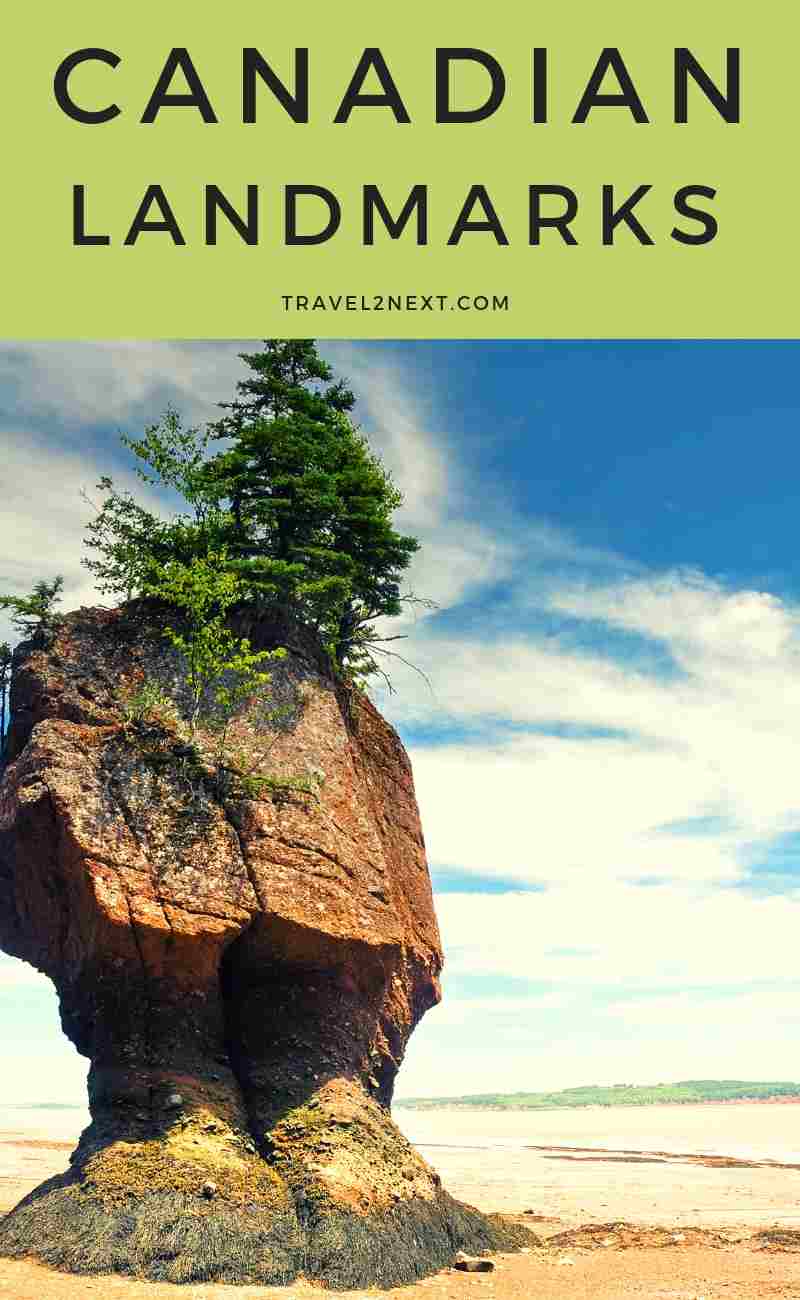
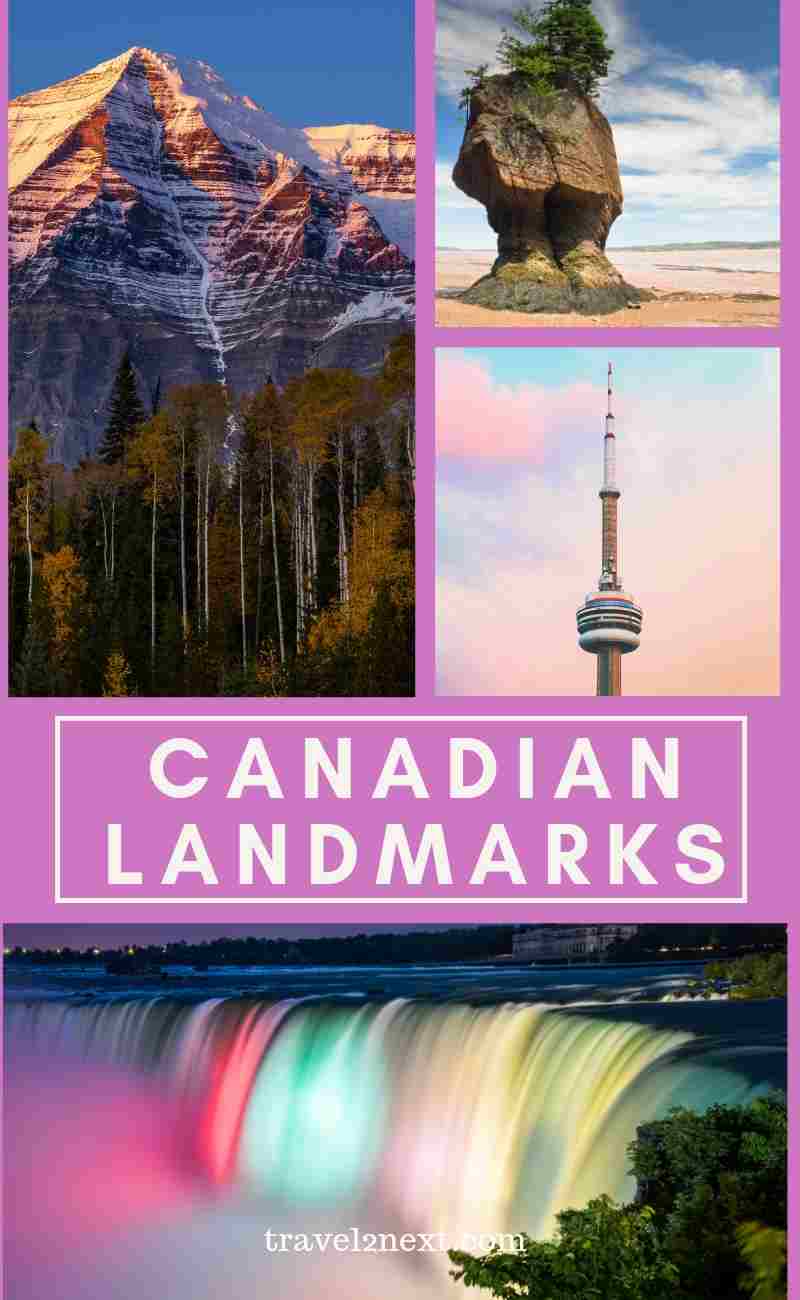
Plan Your Trip

Rent A Car – Find the best car rental rates at Discover Cars. They compare car hire companies to provide you with the best deal right now.

Find A Hotel – If you’re curious about this article and are looking for somewhere to stay, take a look at these amazing hotels.





